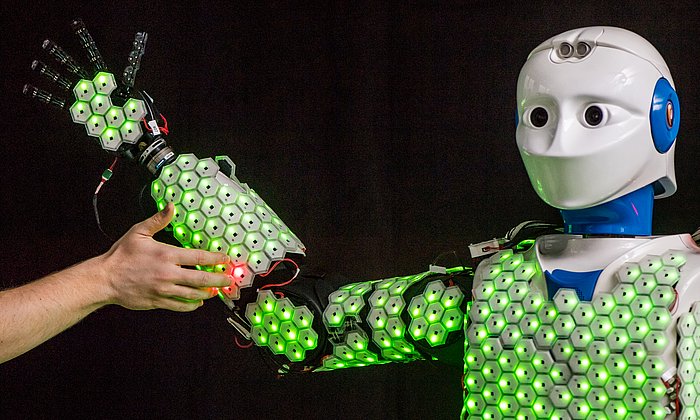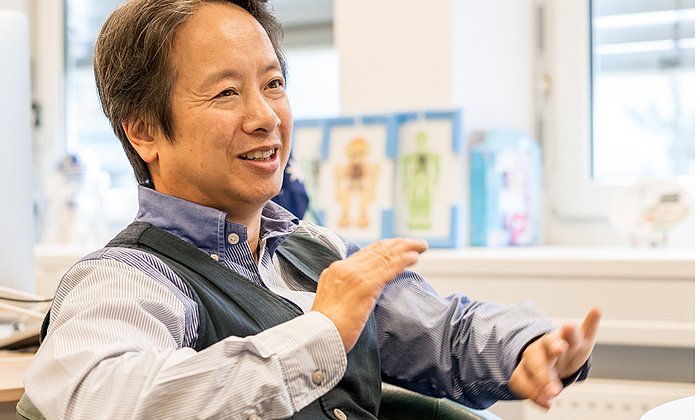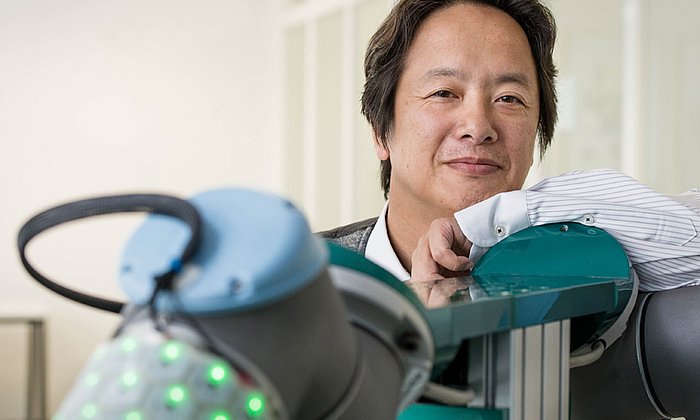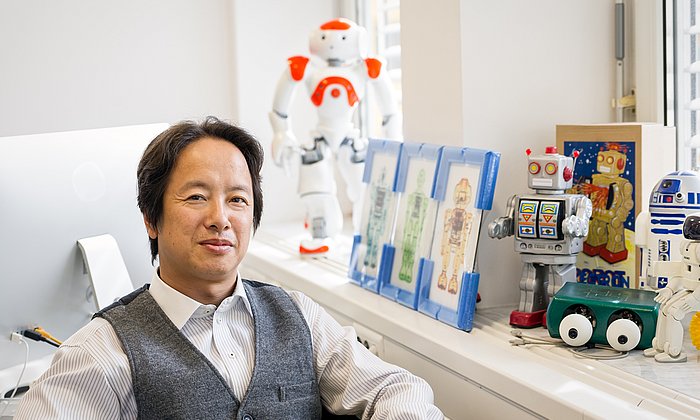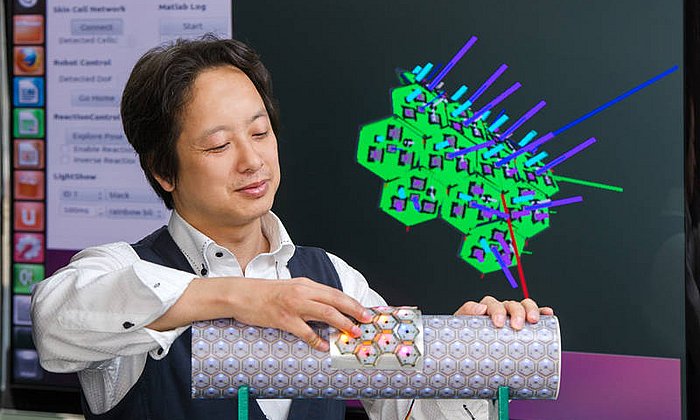Prof. Gordon Cheng on the challenges of fusing robotics and neuroscience
“The machine as an extension of the body”
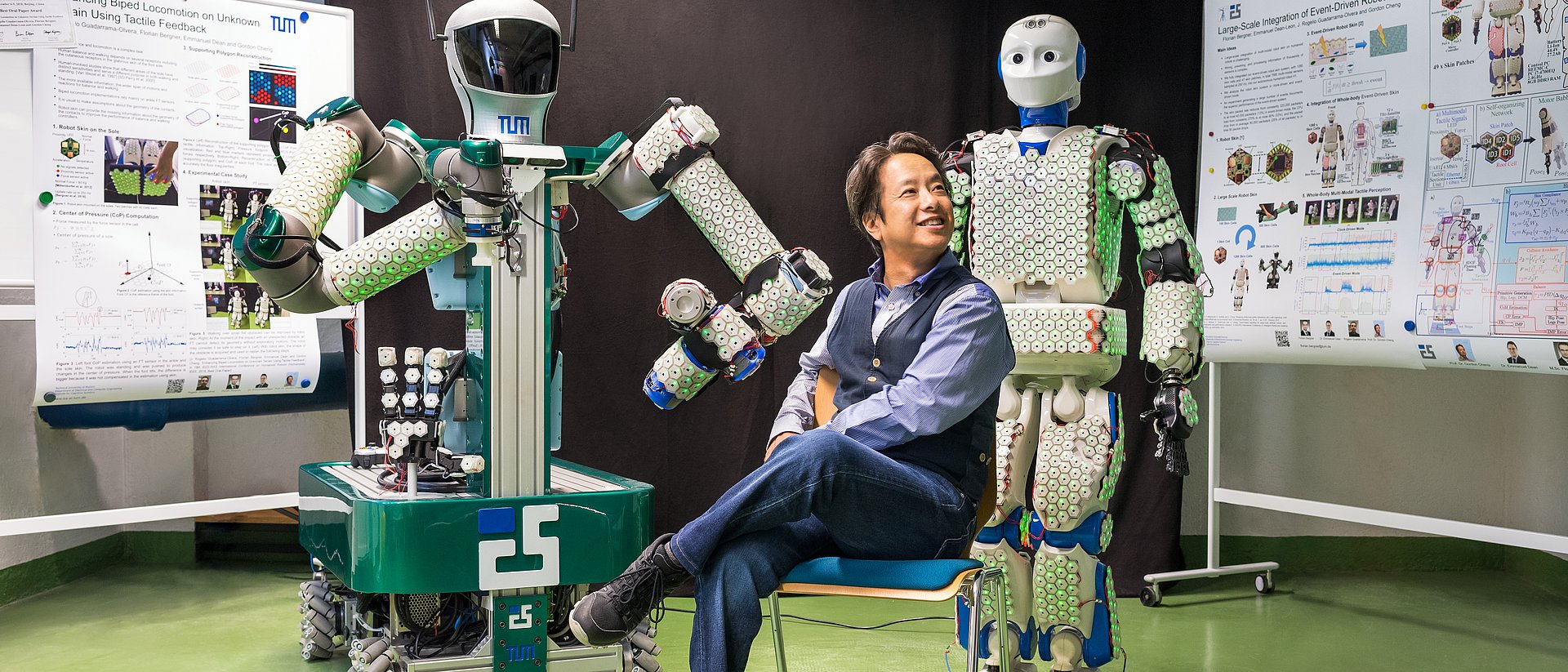
Prof. Cheng, by training a paraplegic patient with the exoskeleton within your sensational study under the “Walk Again” project, you found that patients regained a certain degree of control over the movement of their legs. Back then, this came as a complete surprise to you …
… and it somehow still is. Even though we had this breakthrough four years ago, this was only the beginning. To my regret, none of these patients is walking around freely and unaided yet. We have only touched the tip of the iceberg. To develop better medical devices, we need to dig deeper in understanding how the brain works and how to translate this into robotics.
In your paper published in “Science Robotics” this month, you and your colleague Prof. Nicolelis, a leading expert in neuroscience and in particular in the area of the human-machine interface, argue that some key challenges in the fusion of neuroscience and robotics need to be overcome in order to take the next steps. One of them is to “close the loop between the brain and the machine” – what do you mean by that?
The idea behind this is that the coupling between the brain and the machine should work in a way where the brain thinks of the machine as an extension of the body. Let’s take driving as an example. While driving a car, you don’t think about your moves, do you? But we still don’t know how this really works. My theory is that the brain somehow adapts to the car as if it is a part of the body. With this general idea in mind, it would be great to have an exoskeleton that would be embraced by the brain in the same way.
How could this be achieved in practice?
The exoskeleton that we were using for our research so far is actually just a big chunk of metal and thus rather cumbersome for the wearer. I want to develop a "soft" exoskeleton – something that you can just wear like a piece of clothing that can both sense the user’s movement intentions and provide instantaneous feedback. Integrating this with recent advances in brain-machine interfaces that allow real-time measurement of brain responses enables the seamless adaptation of such exoskeletons to the needs of individual users. Given the recent technological advances and better understanding of how to decode the user’s momentary brain activity, the time is ripe for their integration into more human-centered or, better − brain-centered − solutions.
What other pieces are still missing? You talked about providing a “more realistic functional model” for both disciplines.
We have to facilitate the transfer through new developments, for example robots that are closer to human behaviour and the construction of the human body and thus lower the threshold for the use of robots in neuroscience. This is why we need more realistic functional models, which means that robots should be able to mimic human characteristics. Let’s take the example of a humanoid robot actuated with artificial muscles. This natural construction mimicking muscles instead of the traditional motorized actuation would provide neuroscientists with a more realistic model for their studies. We think of this as a win-win situation to facilitate better cooperation between neuroscience and robotics in the future.
You are not alone in the mission of overcoming these challenges. In your Elite Graduate Program in Neuroengineering, the first and only one of its kind in Germany combining experimental and theoretical neuroscience with in-depth training in engineering, you are bringing together the best students in the field.
As described above, combining the two disciplines of robotics and neuroscience is a tough exercise, and therefore one of the main reasons why I created this master's program in Munich. To me, it is important to teach the students to think more broadly and across disciplines, to find previously unimagined solutions. This is why lecturers from various fields, for example hospitals or the sports department, are teaching our students. We need to create a new community and a new culture in the field of engineering. From my standpoint, education is the key factor.
G. Cheng, S.K. Ehrlich, M. Lebedev, M.A.L. Nicolelis: Neuroengineering challenges of fusing robotics and neuroscience, Science Robotics Vol. 5, Issue 49, eabd1911 (2020). DOI: 10.1126/scirobotics.abd1911
- Prof. Cheng
- Institute for Cognitive Systems
- Elite Graduate Program “Neuroengineering”
- Article about the “Walk Again” Poject in the TUM Magazine “Faszination Forschung”
- Prof. Cheng is Principal Investigator for Perception at the Munich School of Robotics and Machine Intelligence (MSRM) and Principal Investigator for Neuroengineering and Robotics at the Munich School of BioEngineering (MSB).
High resolution images: https://mediatum.ub.tum.de/1584317
Technical University of Munich
Corporate Communications Center
- Christine Lehner
- christine.lehner@tum.de
- presse@tum.de
- Teamwebsite
Contacts to this article:
Prof. Gordon Cheng
Technical University of Munich
Institute for Cognitive Systems
Karlstraße 45/II
80333 Munich
Germany
For direct inquiries please contact:
Wibke Borngesser (Chair of Cognitive Systems)
Tel: +49 89 289 25765
borngesser@tum.de
